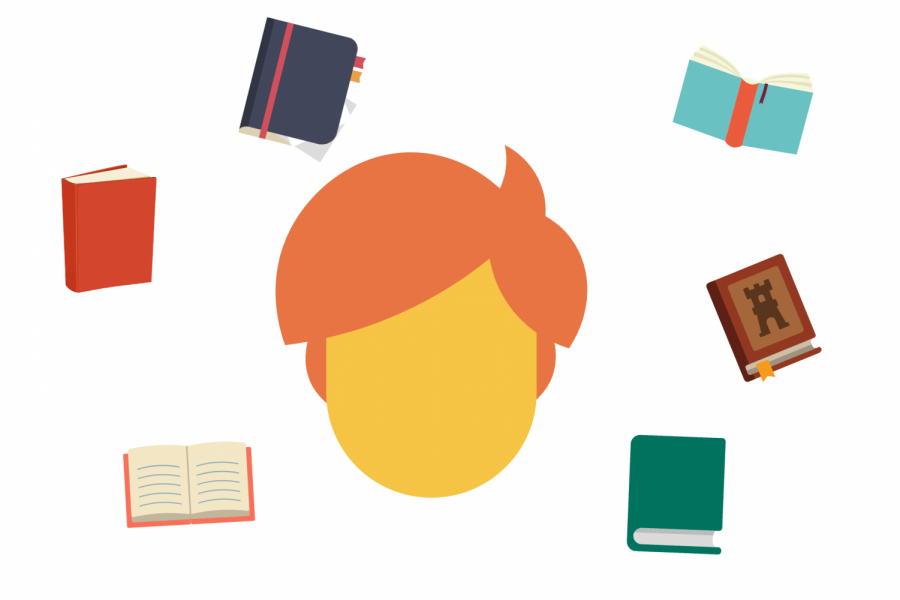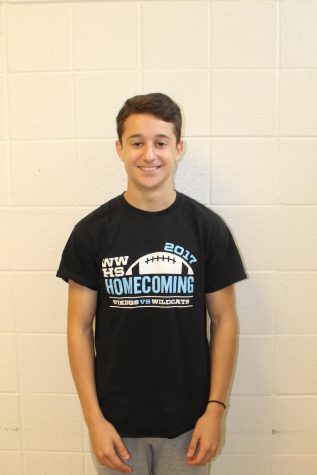High school books, ranked
January 23, 2020
It’s no secret that many high school students find reading to be a nuisance, but when teachers force them to read a book, that nuisance turns into an outright dislike for reading. Even if it’s a good book, forced reading becomes a burden on top of other homework and extracurriculars. Nonetheless, required reading will always be a part of high school.
While there are quite a few summer-ruining books that are torturous for students, there are, of course, books we read that have something meaningful to offer.
In order to sort out the good from the bad, I’ve ranked high school literature from best to worst, in my opinion, through English 9, 10 and the first semester of AP Lang. My criteria for ranking books includes four categories: relatability/relevance, enjoyability, time commitment and overall literary merit.
1: “The Catcher in the Rye” by J.D. Salinger
Yeah, it’s already a controversial list. But to all of the haters — and there are many — at least this book is about a teenager, and a pretty interesting one at that. Holden Caulfield’s whiny voice throughout the under-300-page novel differentiates itself from other books; he speaks in an angsty and cynical way that was novel (pun intended) for its time period. Even with the 1950’s setting, the book still explores relevant issues like mental health and the tremendous amount of pressure on teenagers. Despite the slow pace, Salinger throws in enough crazy and unexpected events, like Holden planning to elope with a girl he previously hated and a prostitute ripping him off, to keep the reader entertained.
2: “Night” by Elie Weisel
This story will never lose its importance. Weisel brutally and beautifully recalls the hardships he faced at concentration camps toward the end of the Holocaust. “Night” gives readers insight into one of the darkest times in history. The book becomes very tough to read early on because of the subject matter, but it’s an incredibly well-written, captivating, raw story about human nature and a time period that changed world history. Weisel helped me, and hopefully, other students that read “Night,” understand why indifference is just as harmful as hate, and how it led to a genocide.
3: “Outliers” by Malcolm Gladwell
Becoming successful is something that all teenagers, especially Whitman students, worry about a lot; Gladwell argues that we need to redefine what it means to be successful, asserting that success is highly dependent on uncontrollable factors. “Outliers” is split up into 11 sections (including an introduction and epilogue) where Gladwell analyzes the stories of exceptional people — the so-called “outliers” in our society.
The defined sections make the book easy to read and allow students to take extended breaks without then having to catch themselves up on forgotten characters or story elements, which is a blessing over the summer. Gladwell expresses his evidence in a straightforward way by using clear language and simple examples. After reading “Outliers,” students question whether or not they’ll be able to achieve the future they dream of — Gladwell repeatedly emphasizes that often, successful people simply have better opportunities than other people. But students can also use the message of “Outliers” to become more motivated to seize every opportunity that may come their way.
4: “Of Mice and Men,” by John Steinbeck
This is a true middle ground book. Steinbeck’s characters do seem real and have complex arcs, but they don’t have much to do for most of the story, aside from finding work while George takes care of Lennie, who is mentally impaired. Steinback dedicates much of “Of Mice and Men”’s plot to the characters just going about their day on a ranch. With the lack of obvious conflict and 1920’s setting, I found myself losing my connection to the story and, consequently, losing my motivation to read it. However, once the climax comes, the rest of the story becomes unpredictable. This causes a lot of tension and excitement, especially as students grow attached to the characters. Steinbeck also delves into complex ethical questions that deal with issues such as euthanasia and uncommon frienships. “Of Mice and Men” is a quick read, so if a student can power through the first two sections, the remainder of the book can be very compelling.
5: “Romeo & Juliet,” by William Shakespeare
Before I get into this, I want to say that I’m thankful for all that Shakespeare contributed to our culture today. He created many words and phrases that we still use today, and his work has had major influences on story structures for modern books and movies.
But none of this erases the fact that students are reading something that’s supposed to be performed on stage. And the story of “Romeo and Juliet” is filled with terrible messages for teenagers: rushing into relationships, underaged sex and illegally purchasing deadly drugs among others. These factors make “Romeo and Juliet” nearly impossible for a student to find enjoyable.
Going into “Romeo and Juliet,” students think the quizzes will be easy since it’s such an iconic story, but there are so many characters and plotlines that are difficult to keep track of throughout the play. Even the publishing companies know that; a summary precedes every scene in “Romeo and Juliet” that lets the reader know what’s about to happen, and even after reading it, a lot of students remain confused about what’s going on.
6: “Great Speeches of the Twentieth Century,” edited by Bob Blaisdell
Great Speeches of the Twentieth Century is an anthology of speeches that the publishing company Dover Thrift Editions classifies as “the twentieth century’s most memorable addresses.” A student’s experience with this anthology is largely based on which speeches they choose to read. Over the summer, AP Lang students have to read 15 of the multitude of speeches.
The speeches vary widely in quality and length. Few of them actually end up being enjoyable to read because, without the speakers, they lose their draw and emotion. Speeches are meant to be heard! Reading a speech just doesn’t have the same emotional impact as hearing it.
However, most of the speeches do cover relevant issues like racism and feminism, or offer inspirational other messages, like Harvey Milk’s “The Hope Speech.” Another positive is that the anthology is similar to “Outliers” in that it’s split up, so it’s more digestible. All in all, a student just needs to hope that the speech they pick is one of the more interesting ones in the book.
P.S. Check how many pages a speech is before you start reading it. Some are three pages. Some are fifteen.
7: “The Odyssey,” by Homer
While reading “The Odyssey,” students end up reading the more drawn out version of a story they already know. From “The Simpsons” to “Saturday Night Live,” the media has parodied stories from “The Odyssey” in many different ways, and many of them are more entertaining than the book. A lot of teachers mention how “The Odyssey” is a meaningful story because the Greeks memorized it in its entirety and passed it down from generation to generation, and because it helped define the structure for epic adventure stories. Does this really make it meaningful to a student, though? Similar to “Romeo and Juliet,” teachers can tell us impressive aspects about “The Odyssey,” but that doesn’t make it any more enjoyable to read. The message of the 20-page cyclops chapter, in which a cyclops devours members of the protagonist’s crew, is that people shouldn’t eat other people. I really hope that doesn’t apply to our lives today.
Honorable Mention: “A Solitary Blue,” by Cynthia Voigt
It’s a pretty bad sign when high school students can vividly recall the overall terribleness of a book from the summer after seventh grade at Pyle Middle School. “A Solitary Blue”’s plot goes something like this: a boy doesn’t have a lot going on in his life, he visits his mom, whom he idolizes. Then, he realizes his mom isn’t a very good person, which was obvious to readers from the beginning, though somehow took Cynthia Voight 256 pages to get across. Along with the excruciatingly slow story, the main character, Jeff Greene, never makes a decision the reader can get behind or understand; while this is similar to Holden Caulfield’s story, Jeff’s voice is far less witty and exciting compared to Holden’s.
Another reason that many former Pyle students despise “A Solitary Blue” is that while students slave away at their never-ending “A Solitary Blue” assignments, teachers gush over seemingly every detail of the book like it’s the Mona Lisa — from the “in your face” symbolism of the blue heron to the Tillerman family that randomly shows up half-way through the book. So all in all, the fact that this book is not a very good read is probably the main takeaway.
Something that’s important to keep in mind while reading a book for school is that someone, somewhere, wanted high schoolers to read it. If a book has not been enjoyable so far, think, “Why does someone want us to read this?” Maybe that will lead to finding aspects of the book to enjoy — or maybe it’s just a terrible book. In that case, all classmates can suffer together, and maybe those same classmates can find themselves still laughing about its silly, blue-heron symbolism years later.










Joel • Sep 28, 2020 at 8:56 pm
I liked A Separate Peace.